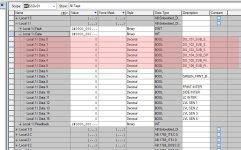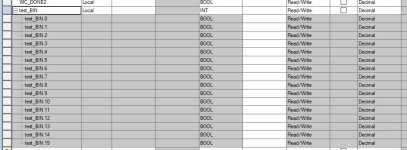Hi,
I trying to figure, how to map local inputs to an array.
I've attaches some images; the FROM image has the the local inputs (from 0 to 5 only) that I would like to map. The TO image has the "destination array" of the selected inputs.
In a nutshell, I have a Fanuc controller wire to the input of compact logix; the controller has a max of 8 output channels (wire to the plc inputs) but I need more I/O to communicate with the Fanuc controller... hopefully this makes sense.
I do remember doing this in the past, but I think I may be confusing software platforms.
Thank you,


I trying to figure, how to map local inputs to an array.
I've attaches some images; the FROM image has the the local inputs (from 0 to 5 only) that I would like to map. The TO image has the "destination array" of the selected inputs.
In a nutshell, I have a Fanuc controller wire to the input of compact logix; the controller has a max of 8 output channels (wire to the plc inputs) but I need more I/O to communicate with the Fanuc controller... hopefully this makes sense.
I do remember doing this in the past, but I think I may be confusing software platforms.
Thank you,







